Energy options for rice drying
What is energy in rice drying used for?
A mechanical dryer for rice needs energy for two purposes:
- For moving air through the bulk of the rice grain.
- For heating up the drying air so that it can absorb more water from the wet grains.
Why is the energy source important?
Energy cost constitutes the largest cost item in mechanical drying and therefore choosing the most appropriate energy source has the highest potential to reduce drying cost. Some forms of energy are also more environmentally friendly than others.
How much energy is needed?
The desired drying rate for optimum dryer use and grain quality is 1% moisture content per hour. To achieve this, around 1m3 of air with a temperature of 43°C needs to be moved through each ton of grain. For each ton dryer capacity this requires 0.7−1 kW motor power for the blower and around 50 kJ/h energy for heating the air.
Energy options for moving the air
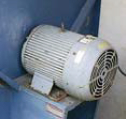 A. Electricity
A. Electricity
An electric motor is the ideal power source for fan.
Advantages:
- Easy to control, clean energy with low noise emissions.
Disadvantages:
- Expensive and often not available in rural areas.
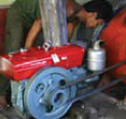 B. Diesel or gasoline
B. Diesel or gasoline
When electricity is not available, a stationary, combustion engine can be used.
Advantages:
- Can be used for other purposes.
Disadvantages:
- Noisy operation with gas emissions.
 C. Free convection
C. Free convection
A long chimney in which hot air moves upward can generate sufficient draft to move air through thin layers of grain.
Advantages:
- No running cost
Disadvantages:
- Very low capacity because the draft created by free convection can only work up to 4−7 cm layer.
- High investment cost per kg dryer capacity.
Our choice:
For a mechanical dryer: Electric motor and rice husk furnace or diesel engine and rice husk furnace.
For the farm level: The Solar Bubble Dryer.
For more information:
To view the fact sheets on postharvest, visit http://www.knowledgebank.irri.org
Energy options for heating the drying air
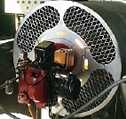 1. Kerosene
1. Kerosene
Kerosene is commonly used for rice drying.
Advantages:
- Easy to handle, store, and transport.
- Burners require little space and can be automated easily.
Disadvantages:
- Kerosene is expensive and price is likely to increase further.
- Emission of CO2 from burning fossil fuel.
Consumption: 1.8−2 Liters/h and per ton of paddy.
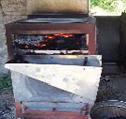 2. Rice hull
2. Rice hull
Rice hull is a by-product in the milling process and is often considered waste.
Advantages:
- Available cheaply in sufficient amounts, often only transport cost.
- Renewable energy source: CO2 that is released in burning was previously accumulated by the rice plant.
Disadvantages:
- Low bulk density limits transport to short distances.
- Limited flow-ability requires special furnace design or a high labor requirement.
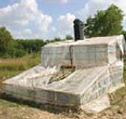 3. Solar energy using solar collectors
3. Solar energy using solar collectors
Solar energy is freely available during the day and is environmentally friendly. Assuming an average solar radiation of 500 W/m3 and 70% collector efficiency, one square meter of solar panel can generate 1,260 kJ/h or roughly 15,000 kJ/d.
Disadvantages:
- Most heat is needed when it rains or during night.
- High investment cost and space requirement, the solar collector area needed is around 10 times the area of the drying bin.
- Temperature control is a major problem.
A promising new technology: The Solar Bubble Dryer

Solar-powered fans inflate the Solar Bubble Dryer and move air over the rice inside the tunnel to remove the evaporated water. Sunrays entering through the transparent top heat up the drying air.
Advantages:
- Only uses solar energy − low operating cost.
- Protects the grains from rain, pests, and keeps it clean.
Disadvantages:
- Drying performance depends on the sunshine. During cloudy days, drying time is extended to 2 days.